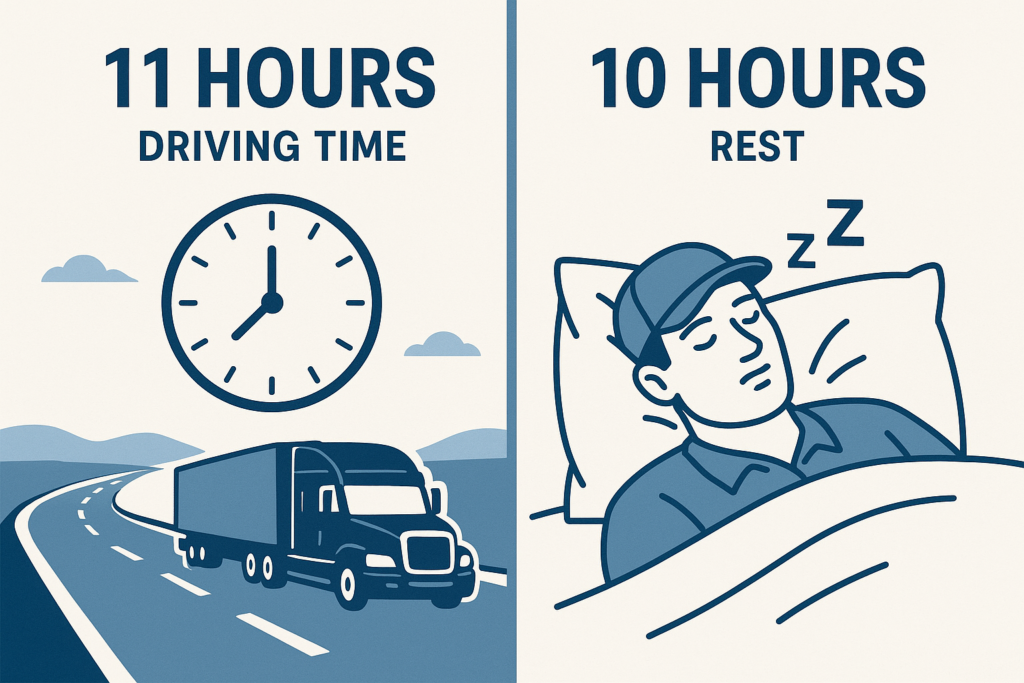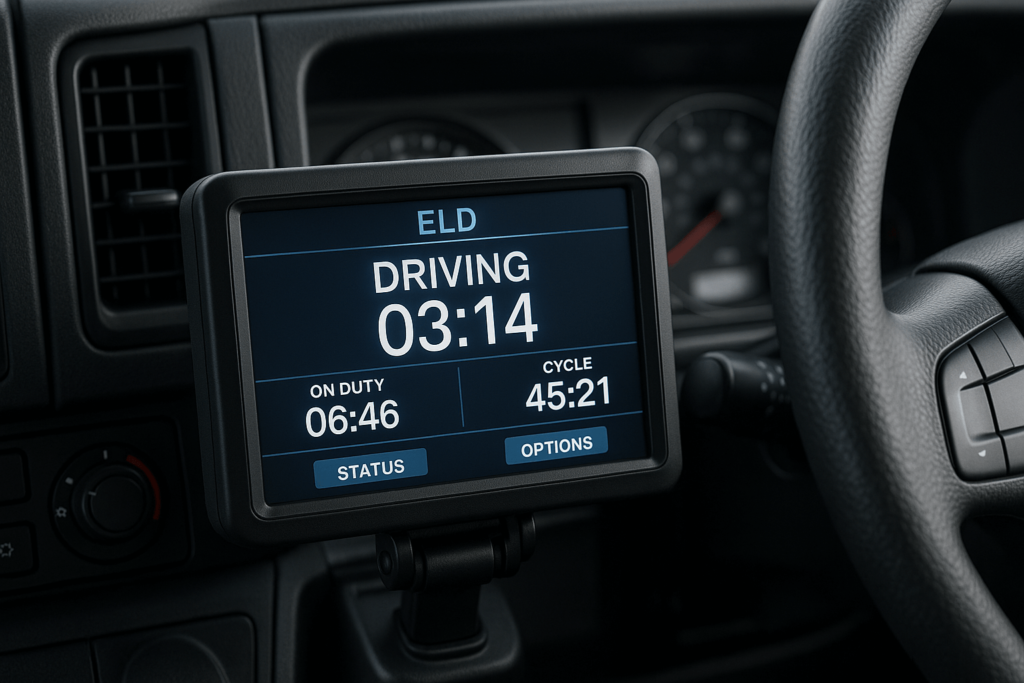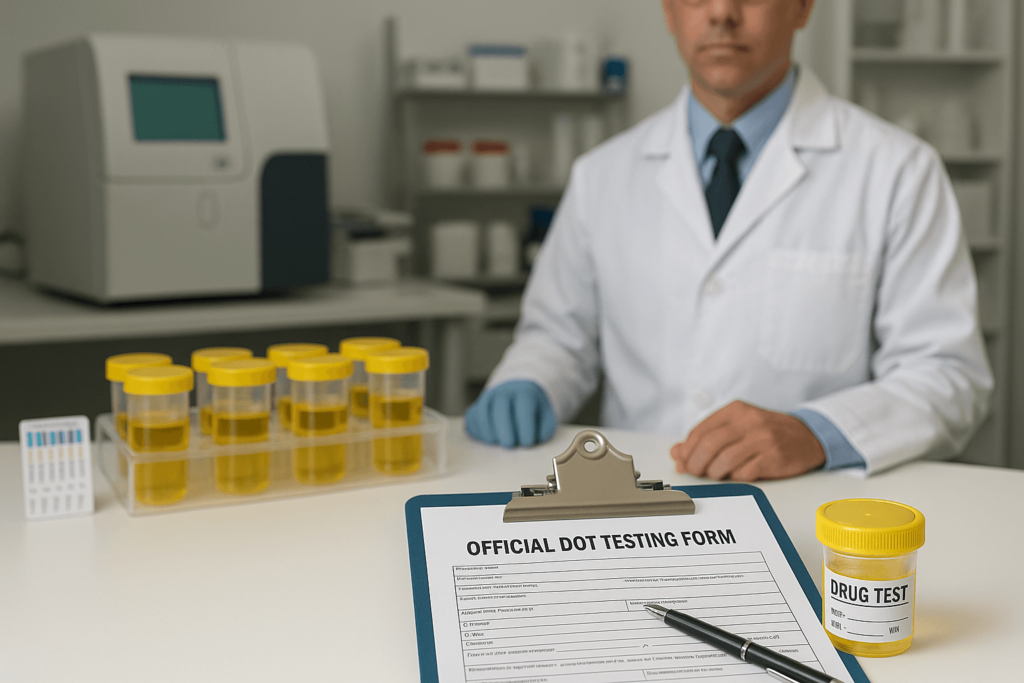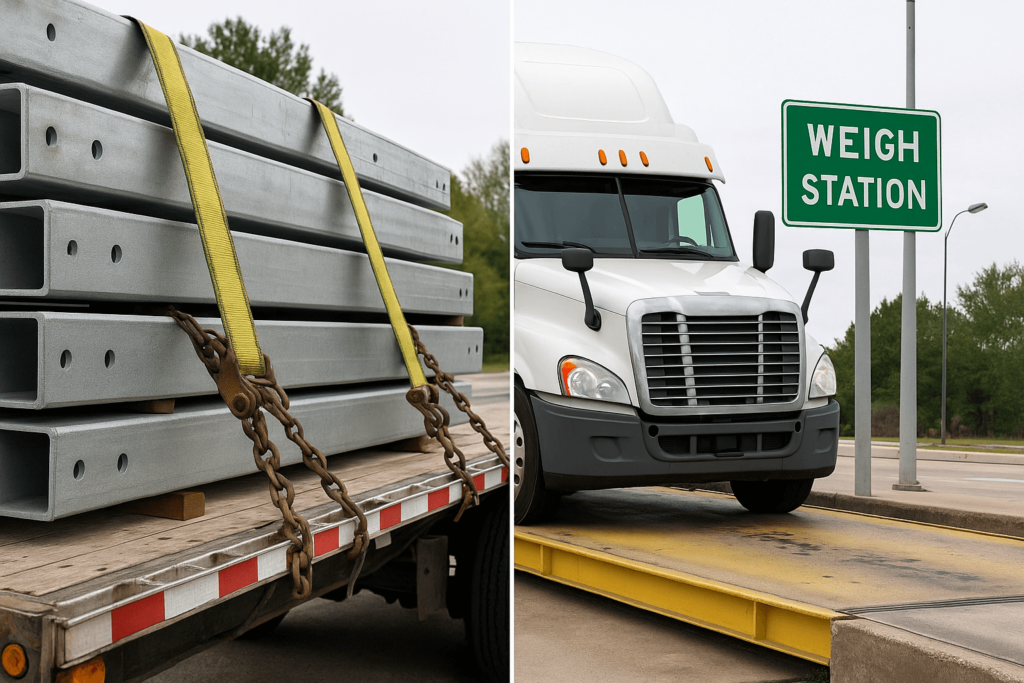Did you know that FMCSA violations cost the trucking industry over $2.8 billion annually in fines and penalties? That’s a staggering number that could make any driver’s wallet hurt! As a professional truck driver, navigating the complex web of Federal Motor Carrier Safety Administration (FMCSA) regulations isn’t just about staying legal—it’s about protecting your livelihood and keeping America’s supply chain moving safely.
Whether you’re a seasoned veteran or just starting your trucking career, these federal regulations can feel overwhelming. But here’s the thing: I’ve been in your boots, and I know that understanding these rules doesn’t have to be rocket science! In this comprehensive guide, we’ll break down every FMCSA regulation that directly impacts your daily driving operations, from hours of service requirements to vehicle inspection protocols.

The Federal Motor Carrier Safety Administration serves as the primary regulatory body overseeing commercial vehicle operations across the United States. Understanding their authority helps you grasp why compliance matters so much for your trucking career.
The FMCSA was established in 2000 with a clear mandate: reduce crashes, injuries, and fatalities involving large trucks and buses. Their regulations apply to all commercial motor vehicles (CMVs) engaged in interstate commerce, which includes most trucking operations today.
When you’re driving interstate commerce, federal FMCSA regulations take precedence over state laws. However, states can enforce stricter standards, so you’ll need to comply with whichever regulation is more stringent. This is why staying informed about both federal and state-specific requirements protects your driving record.
The FMCSA continuously updates regulations based on safety data and industry feedback. Recent changes include modifications to the hours of service rules, enhanced drug and alcohol testing protocols, and stricter ELD compliance requirements. Staying current with these changes isn’t optional—it’s essential for maintaining your commercial driving privileges.
“In my 15 years of trucking and helping drivers navigate compliance challenges, I’ve seen too many good drivers lose their careers over preventable violations. The difference between a thriving trucker and one struggling with penalties isn’t luck—it’s knowledge. Every regulation you master is money in your pocket and security for your family.”

Hours of service regulations form the backbone of commercial driving compliance. These rules exist to prevent driver fatigue, which contributes to thousands of accidents annually.
You can drive a maximum of 11 hours after 10 consecutive hours off duty. This driving time doesn’t include time spent loading, unloading, or performing other non-driving duties. Once you’ve driven 11 hours, you must take at least 10 consecutive hours off duty before driving again.
Your 14-hour duty period begins when you start any work-related activity after your required off-duty time. You cannot drive after the 14th hour, even if you haven’t used all 11 driving hours. This rule prevents drivers from extending their work day indefinitely with breaks.
After driving for 8 cumulative hours, you must take a break of at least 30 minutes before continuing to drive. If you’re using a sleeper berth, you can split your required 10-hour break into two periods: one of at least 7 consecutive hours in the sleeper berth and another of at least 2 consecutive hours either off duty or in the sleeper berth.
You cannot drive after accumulating 60 hours on duty in 7 consecutive days (or 70 hours in 8 consecutive days). To reset this clock, you must take at least 34 consecutive hours off duty, including two periods from 1:00 AM to 5:00 AM.
Related: Learn more about ELD compliance requirements and pre-trip inspection procedures

ELD compliance represents one of the most significant regulatory changes in recent trucking history. Understanding these requirements prevents costly violations and keeps you legally compliant.
Most commercial drivers operating vehicles manufactured after model year 2000 must use ELDs. Exemptions include drivers operating vehicles manufactured before 2000, short-haul drivers who qualify for the 150-air-mile exemption, and drivers who keep paper logs for 8 days or fewer within a 30-day period.
Your ELD must be certified and registered with the FMCSA. The device must automatically record driving time, engine hours, vehicle miles, and location information. It should also allow you to review and annotate your records and transfer data to enforcement officials during inspections.
You’re responsible for ensuring your ELD accurately reflects your duty status. You must review your records daily, annotate any missing or incorrect information, and certify the accuracy of your logs. Keep supporting documents for at least 7 days to verify ELD entries.
When your ELD malfunctions, you have 8 days to repair, replace, or service the device. During this period, you must maintain paper logs and note the malfunction. You cannot continue operating with a malfunctioning ELD beyond the 8-day grace period.
During roadside inspections, you must display your ELD records on the device or provide a printout if requested. Ensure your ELD can transfer data wirelessly to enforcement officials and that you have backup methods available if technology fails.
Related: Check out our guides on hours of service compliance and CSA scoring

Your CDL represents your professional credentials and livelihood. Maintaining compliance with CDL requirements ensures continued driving privileges and career opportunities.
Class A CDLs allow you to operate combination vehicles with a gross combination weight rating (GCWR) of 26,001 pounds or more. Class B permits operation of large trucks, large buses, and articulated buses. Additional endorsements may be required for specific cargo types like hazardous materials, passengers, or school buses.
You must maintain a valid Medical Examiner’s Certificate (DOT physical) to operate commercial vehicles. Most drivers need renewal every two years, though certain medical conditions may require more frequent examinations. Your medical certificate must be on file with your state licensing agency.
CDL renewal requirements vary by state but typically occur every 4-8 years. You must complete any required training, pass vision tests, and maintain medical certification. Some states require additional testing or training for renewal.
You must notify your employer within 30 days of any traffic violations (except parking violations) in any vehicle. Notify your state licensing agency within 30 days of any out-of-state violations or license suspensions. Failure to report violations can result in CDL suspension.
Serious CDL violations can result in disqualification periods ranging from 60 days to life. Multiple violations within specified timeframes trigger longer disqualification periods. Some violations, like driving under the influence, result in immediate CDL suspension and impact your CSA scores.
Related: Learn about drug and alcohol testing requirements and vehicle inspection procedures

Proper vehicle inspection and maintenance procedures ensure safety compliance and prevent roadside violations that can sideline you and your equipment.
You must conduct a thorough pre-trip inspection before operating your vehicle each day. This inspection must cover all safety-related systems including brakes, steering, lighting, tires, coupling devices, and cargo securement. Document any defects on your Driver Vehicle Inspection Report (DVIR).
At the end of each driving day, complete a post-trip inspection and prepare a DVIR listing any defects or deficiencies discovered. If no defects are found, the report should state “no defects.” Your carrier must review and sign each DVIR.
Commercial vehicles must pass annual safety inspections conducted by qualified inspectors. The inspection covers brake systems, coupling devices, exhaust systems, frames, fuel systems, lighting, steering mechanisms, tires, van and open-top trailer bodies, wheels and rims, windshield wipers, and other safety equipment.
Never operate a vehicle with out-of-service defects. These critical safety violations include brake defects, steering problems, lighting deficiencies, tire issues, or other conditions that present an imminent hazard. Operating with out-of-service conditions results in immediate shutdown and significant penalties that affect your CSA scores.
Complete DVIRs thoroughly and accurately. Include specific details about any defects, their location, and severity. Sign and date each report. Keep copies for your records and ensure your carrier receives the original. Incomplete or falsified DVIRs can result in serious violations.
Related: Understanding ELD requirements and hours of service compliance

The FMCSA maintains strict drug and alcohol testing requirements designed to ensure commercial drivers operate safely and responsibly.
Before your first driving assignment, you must complete pre-employment drug testing. No alcohol testing is required pre-employment, but you cannot consume alcohol within 4 hours of reporting for duty. Pre-employment tests must show negative results before you can begin safety-sensitive functions.
Employers must conduct random drug and alcohol testing throughout the year. The minimum annual testing rates are 50% for drug testing and 10% for alcohol testing of the average number of driver positions. Random selections must be truly random and unannounced.Employers must conduct random drug and alcohol testing throughout the year. The minimum annual testing rates are 50% for drug testing and 10% for alcohol testing of the average number of driver positions. Random selections must be truly random and unannounced.
Testing is required after accidents involving fatalities, injuries requiring immediate medical treatment away from the scene, or vehicle damage requiring towing. Testing must occur as soon as practicable but no later than 8 hours for alcohol and 32 hours for drugs after the accident
Supervisors trained in detecting signs of drug and alcohol use can require testing based on reasonable suspicion. Observable signs might include behavior, speech, appearance, or performance indicators consistent with substance use
If you violate drug and alcohol regulations, you must complete a return-to-duty process before resuming safety-sensitive functions. This includes evaluation by a Substance Abuse Professional (SAP), completion of recommended treatment or education, negative return-to-duty test, and follow-up testing plan. These violations significantly impact your CDL status and CSA scores.
Related: Learn about CDL requirements and FMCSA enforcement

Related: Learn about CDL requirements and FMCSA enforcement
Cargo must be secured to prevent shifting, falling, or becoming loose during transport. The general rule requires cargo to be secured to withstand forces of 0.8g forward, 0.5g backward and sideways, and 0.2g upward. Specific commodities have additional securement requirements.
Federal bridge formula limits determine maximum allowable weights based on axle spacing. Generally, single axles are limited to 20,000 pounds, tandem axles to 34,000 pounds, and gross vehicle weight to 80,000 pounds on interstate highways. Proper weight distribution prevents overloading individual axles.
Minimum tie-down requirements depend on cargo weight. Cargo weighing 5,000 pounds or less requires at least 2 tie-downs. Cargo over 5,000 pounds requires 2 tie-downs plus 1 additional tie-down for each additional 5,000 pounds or fraction thereof. Tie-downs must have adequate working load limits.
Logs, dressed lumber, metal coils, paper rolls, concrete pipes, and other specific commodities have specialized securement requirements. Familiarize yourself with requirements for commodities you regularly transport to ensure proper securement procedures.
As the driver, you’re responsible for ensuring cargo is properly secured before transport and checking securement devices during your trip. You can be held liable for improperly secured cargo that causes accidents or property damage. Violations affect your CSA scores and may require additional inspections.
Related: Check our guides on vehicle inspection requirements and CDL endorsements

The CSA program helps FMCSA and state enforcement agencies identify high-risk carriers and drivers for interventions and enforcement actions.
CSA scores are calculated using violation severity weights, time decay factors, and exposure measures. Recent violations carry more weight than older ones, and more severe violations receive higher point values. Scores are calculated monthly and compared to other drivers with similar exposure levels.
The seven Behavior Analysis and Safety Improvement Categories (BASICs) include:
High CSA scores can affect your employability, insurance rates, and frequency of roadside inspections. Carriers often use CSA scores in hiring decisions, and poor scores may limit your job opportunities or result in termination.
Focus on safe driving practices, maintain proper hours of service compliance, keep your vehicle in good mechanical condition through regular inspections, and stay current with all required certifications and training. Address violations promptly and understand how they impact your CSA scores.
The DataQs system allows you to request reviews of violations you believe are incorrect. You can challenge violations for administrative errors, factual errors, or other issues. Submit requests within established timeframes and provide supporting documentation to strengthen your case.
Related: Learn about FMCSA enforcement and ELD compliance scores may limit your job opportunities or result in termination.
Mastering FMCSA regulations isn’t just about avoiding fines—it’s about building a sustainable, profitable trucking career! Throughout this guide, we’ve covered the essential federal requirements that govern your daily operations, from hours of service compliance to vehicle maintenance standards. Remember, staying compliant with FMCSA regulations protects not only your CDL and driving record but also ensures you remain an attractive candidate for the best trucking opportunities.
The key to success? Make compliance a daily habit, not an afterthought. Keep this guide handy, stay updated on regulatory changes, and never hesitate to ask questions when you’re unsure about requirements. Your career—and your safety—depend on it!
Ready to take your compliance knowledge to the next level? Bookmark this comprehensive guide and start implementing these best practices today. Safe driving, and remember: knowledge is your best defense against violations!
We’re here to keep your trucking business moving forward. Reach out to us with any inquiries, service requests, or partnership opportunities. Let’s grow together!

Let Clear Path Trucking LLC. be your trusted partner in navigating the road to success. Whether you’re an owner-operator or managing a fleet, we’re here to help you take your trucking business to the next level.
Subscribe to receive industry updates and tips directly in your inbox
© Copyright 2024 Clear Path Trucking LLC. - All Rights Reserved.